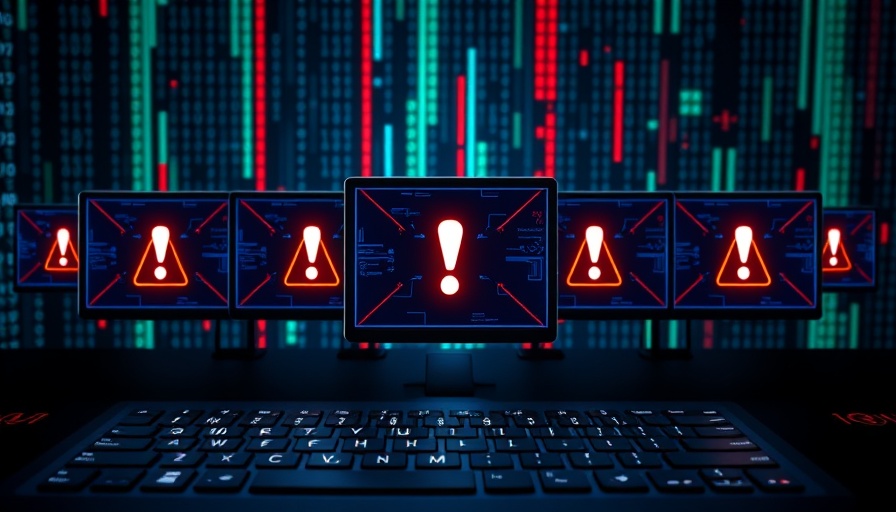
Unmasking the Atomic Credential Stealer: How It Targets Mac Users
The recent rise of the Atomic credential stealer represents a significant threat to Mac users, especially as cybersecurity concerns escalate in today's digital landscape. A report from LastPass highlights the cunning nature of this attack, which exploits well-known brands to lure victims into downloading malware. As we dive deeper, it's essential to understand the mechanics behind this tool and the broader implications for online security.
How the Attack Works: Bypassing Gatekeeper
Cybercriminals have embraced innovative approaches to distribute the potent Atomic Stealer, particularly taking advantage of legitimate platforms like GitHub. Users searching for LastPass for macOS may find deceptive ads positioned at the top of search engines, which lead to fraudulent sites. These sites are designed to appear reputable while they stealthily install malware on the victim’s Mac.
One particularly alarming technique involves bypassing Apple's Gatekeeper, which is designed to prevent the installation of known malware. Attackers have crafted methods that masquerade as benign actions, tricking users into executing commands that ultimately install the credential stealer without raising any red flags. This method, disguised as a CAPTCHA challenge, demonstrates the lengths to which attackers will go to deceive users.
Brands Impersonated: A Deadly Trend in Cybersecurity
LastPass's warning sheds light on a broader trend where numerous well-known brands, including 1Password, Dropbox, and Shopify, have fallen victim to such impersonation tactics. This escalation raises important questions about brand vulnerability and consumer trust in digital services. With attackers now targeting reputable services to amplify their reach, users must be increasingly vigilant about where they download software and the authenticity of what they find online.
The Evolution of Cybersecurity Threats: Insights for 2025
As we look to the future, the landscape of online security threats continues to evolve. With a forecast showing a rise in sophisticated AI-powered fraud targeting both consumers and businesses, the importance of robust cybersecurity measures cannot be overstated. Currently, trends indicate that integrating AI into cybersecurity solutions is vital for threat detection and prevention, enhancing the ability of organizations to respond to emerging threats rapidly.
The cybersecurity tools of 2025 are expected to utilize machine learning algorithms to identify vulnerabilities and protect data proactively. Companies investing in AI for fraud prevention and online security will be better positioned to combat the growing threat landscape as they evolve with technological advancements.
Empowering Yourself Against Online Threats
In light of these developments, it's essential for individuals and organizations alike to take proactive steps to bolster their online defenses. Utilizing AI-based cybersecurity solutions can significantly enhance one's capability to detect and mitigate threats before they result in damage. With the right tools, such as AI-powered encryption and automated security applications, users can effectively safeguard their sensitive information against the modus operandi of today’s cybercriminals.
As online security threats flourish, fostering an environment of vigilance and awareness is imperative. Maintaining up-to-date software, employing robust security tools, and understanding potential risks will lead to better protection strategies.
 Add Row
Add Row  Add
Add 




Write A Comment